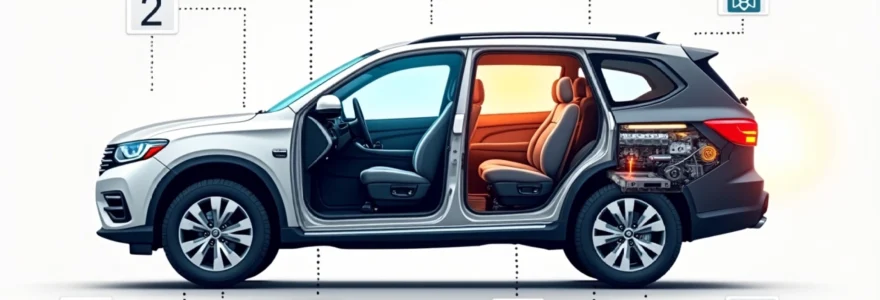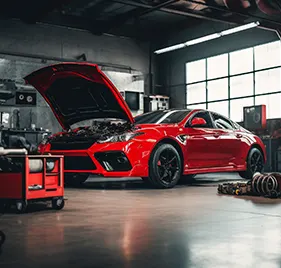Safety should always be the top priority when it comes to vehicle operation. A thorough pre-trip safety inspection is a crucial step in ensuring your vehicle is roadworthy and minimizing the risk of accidents or breakdowns. This comprehensive guide will walk you through the essential components of a vehicle safety checklist and provide detailed instructions on how to perform a proper pre-trip inspection.
Essential components of a vehicle safety checklist
A comprehensive pre-trip safety inspection involves examining various parts of your vehicle, both inside and out. The key areas to focus on include the exterior, under-the-hood components, interior safety features, and mechanical systems. By systematically checking these elements, you can identify potential issues before they escalate into serious problems on the road.
To ensure a thorough inspection, create a checklist that covers all critical components. This checklist should be tailored to your specific vehicle type and any regulatory requirements applicable to your region or industry. Remember, a well-structured checklist serves as a guide and helps maintain consistency in your inspection process.
Exterior inspection procedures
The exterior inspection is the first step in your pre-trip safety check. This process involves a careful examination of your vehicle's outer components to identify any visible damage, wear, or potential safety hazards. Let's delve into the key areas you should focus on during this phase of the inspection.
Assessing tire condition and pressure
Proper tire maintenance is crucial for vehicle safety and performance. Start by visually inspecting each tire for signs of damage, such as cuts, bulges, or uneven wear patterns. Use a tire pressure gauge to check that all tires, including the spare, are inflated to the manufacturer's recommended pressure levels. Remember, underinflated tires can lead to reduced fuel efficiency and increased risk of blowouts.
Look for any objects embedded in the tire treads and remove them if possible. Check the tread depth using a tread depth gauge or the "penny test" method. If the tread is worn below 2/32 of an inch, it's time to replace the tire.
Evaluating lights and signals functionality
Functional lights and signals are essential for safe driving and communication with other road users. Test all exterior lights, including headlights (both low and high beams), taillights, brake lights, turn signals, and hazard lights. Ensure that all bulbs are working and that lenses are clean and free from cracks or damage.
If possible, have someone assist you in checking the brake lights while you depress the brake pedal. Alternatively, you can perform this check by backing up close to a reflective surface and observing the reflection of your brake lights.
Checking windshield and wiper integrity
A clear, undamaged windshield is crucial for optimal visibility while driving. Inspect the windshield for any cracks, chips, or other damage that could impair your vision or compromise the structural integrity of the glass. Small chips should be repaired promptly to prevent them from spreading into larger cracks.
Examine the windshield wipers for signs of wear or damage. Replace wiper blades that are cracked, split, or leave streaks when in use. Don't forget to check the windshield washer fluid level and top it up if necessary.
Examining body damage and fluid leaks
Walk around the vehicle, looking for any signs of body damage, such as dents, scratches, or rust. While minor cosmetic issues may not affect safety directly, they can be indicators of more serious underlying problems or previous accidents.
Check under the vehicle for any signs of fluid leaks. Different fluids have distinct colors and can help you identify the source of the leak:
- Engine oil: Brown or black
- Coolant: Green, orange, or pink
- Transmission fluid: Red or brown
- Brake fluid: Clear to light brown
- Power steering fluid: Red or pink
Any significant fluid leaks should be addressed immediately by a qualified mechanic.
Under-the-hood examination techniques
The under-the-hood inspection is a critical part of your pre-trip safety check. This phase involves examining various components of your vehicle's engine and related systems to ensure they are in proper working condition. Let's explore the key areas to focus on during this part of the inspection.
Fluid level verification: oil, coolant, and brake fluid
Proper fluid levels are essential for the smooth operation of your vehicle. Start by checking the engine oil level using the dipstick. The oil should be between the minimum and maximum marks and appear clean. If it's dark or gritty, it may be time for an oil change.
Next, check the coolant level in the overflow tank. Ensure it's between the "Full" and "Low" marks when the engine is cool. Never open the radiator cap when the engine is hot, as this can lead to severe burns.
Verify the brake fluid level in the master cylinder reservoir. It should be between the "Min" and "Max" lines. If it's low, there may be a leak in the brake system, which requires immediate attention.
Battery health and connection assessment
A well-functioning battery is crucial for starting your vehicle and powering various electrical systems. Inspect the battery for any signs of corrosion on the terminals. Clean any corrosion using a mixture of baking soda and water, then dry thoroughly.
Check that the battery is securely mounted and that all connections are tight. If your battery is more than three years old, consider having its capacity tested by a professional. Many auto parts stores offer this service for free.
Belt and hose condition analysis
Examine all visible belts and hoses for signs of wear, cracking, or fraying. The serpentine belt, which drives multiple engine accessories, is particularly important. If it shows signs of glazing or has cracks, it should be replaced.
Inspect hoses for any bulges, soft spots, or signs of leaking. Gently squeeze the hoses (when the engine is cool) to check for any unusual softness or brittleness. Pay special attention to coolant hoses, as their failure can lead to engine overheating.
Air filter inspection and replacement criteria
A clean air filter is essential for optimal engine performance and fuel efficiency. Locate the air filter housing and remove the filter. Hold it up to a light source; if you can't see light passing through it, it's time for a replacement.
Most vehicle manufacturers recommend replacing the air filter every 15,000 to 30,000 miles, but this can vary based on driving conditions. If you frequently drive on dusty roads, you may need to replace it more often.
Interior safety features verification
The interior inspection is just as important as the exterior and under-the-hood checks. This phase focuses on verifying the functionality of various safety features inside your vehicle. Let's examine the key areas to inspect during this part of your pre-trip safety check.
Seatbelt functionality and wear inspection
Seatbelts are your first line of defense in the event of an accident. Check each seatbelt in the vehicle for proper functionality. Ensure that the belts extend and retract smoothly, and that the buckles latch securely. Look for any signs of fraying, cuts, or excessive wear in the webbing.
Test the automatic locking mechanism by pulling the belt out quickly. It should lock in place. If any seatbelt shows signs of damage or doesn't function correctly, have it replaced immediately.
Dashboard warning light diagnostics
Start the engine and observe the dashboard. All warning lights should illuminate briefly during startup and then go out. If any warning lights remain on, it could indicate a problem that needs attention. Common warning lights to watch for include:
- Check Engine Light
- Oil Pressure Warning
- Battery/Charging System Warning
- Brake System Warning
- Airbag System Warning
If you're unsure about the meaning of a particular warning light, consult your vehicle's owner manual or have it checked by a professional.
HVAC system operational check
While not directly related to safety, a properly functioning heating, ventilation, and air conditioning (HVAC) system contributes to driver comfort and alertness. Test both the heating and cooling functions of your HVAC system. Ensure that air flows from all vents and that temperature controls work correctly.
Check that the defrosting function is working properly, as this is crucial for maintaining visibility in cold or humid conditions. If you notice any unusual odors or reduced airflow, it may be time to replace the cabin air filter or have the system inspected by a technician.
Mechanical systems Pre-Trip testing
The final phase of your pre-trip safety inspection involves testing various mechanical systems to ensure they're functioning correctly. This step is crucial for identifying any issues that might not be apparent during a visual inspection.
Start by testing the brakes. With the engine running, press the brake pedal firmly. It should feel solid and not sink to the floor. If you feel any sponginess or the pedal goes too low, there may be air in the brake lines or a leak in the system.
Next, check the steering. With the engine running, turn the steering wheel from lock to lock. It should move smoothly without any unusual noises or resistance. If you feel any vibrations or hear any clunking sounds, it could indicate worn steering components.
Test the transmission by shifting through all gears. The transitions should be smooth without any jerking or hesitation. For manual transmissions, ensure the clutch engages and disengages properly.
Finally, take a short test drive if possible. Listen for any unusual noises and pay attention to how the vehicle handles. Any vibrations, pulling to one side, or unusual behavior should be investigated further.
Documentation and regulatory compliance for Pre-Trip inspections
Proper documentation of your pre-trip inspections is not only good practice but may also be a legal requirement, especially for commercial vehicles. Familiarize yourself with the regulations that apply to your specific situation.
Create a standardized inspection form that covers all the points in your checklist. Record the date, time, and results of each inspection, noting any issues discovered and actions taken. Keep these records in the vehicle and maintain copies for your personal or company files.
For commercial drivers, the Federal Motor Carrier Safety Administration (FMCSA) requires a daily vehicle inspection report. This report must be completed at the end of each driving day and should include any defects or deficiencies discovered that could affect the safe operation of the vehicle.
A thorough pre-trip inspection is not just about compliance; it's about ensuring the safety of yourself, your passengers, and other road users. By making this process a habit, you'll be better equipped to identify and address potential issues before they lead to accidents or breakdowns on the road.

